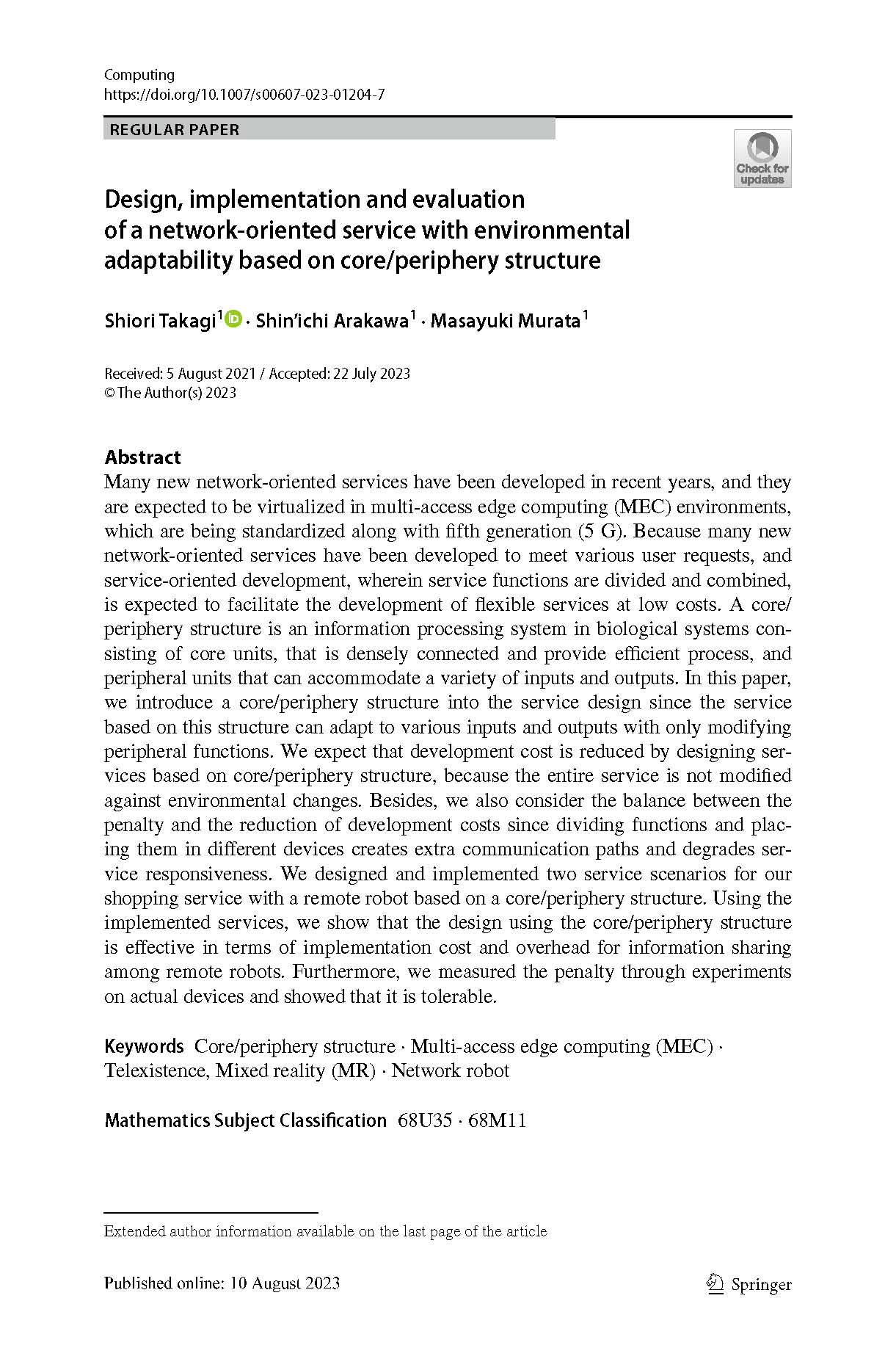Design, implementation and evaluation of a network-oriented service with environmental adaptability based on core/periphery structure
Article Ecrit par: Murata, Masayuki ; Arakawa, Shin'ichi ; Takagi, Shiori ;
Résumé: Many new network-oriented services have been developed in recent years, and they are expected to be virtualized in multi-access edge computing (MEC) environments, which are being standardized along with fifth generation (5 G). Because many new network-oriented services have been developed to meet various user requests, and service-oriented development, wherein service functions are divided and combined, is expected to facilitate the development of flexible services at low costs. A core/periphery structure is an information processing system in biological systems consisting of core units, that is densely connected and provide efficient process, and peripheral units that can accommodate a variety of inputs and outputs. In this paper, we introduce a core/periphery structure into the service design since the service based on this structure can adapt to various inputs and outputs with only modifying peripheral functions. We expect that development cost is reduced by designing services based on core/periphery structure, because the entire service is not modified against environmental changes. Besides, we also consider the balance between the penalty and the reduction of development costs since dividing functions and placing them in different devices creates extra communication paths and degrades service responsiveness. We designed and implemented two service scenarios for our shopping service with a remote robot based on a core/periphery structure. Using the implemented services, we show that the design using the core/periphery structure is effective in terms of implementation cost and overhead for information sharing among remote robots. Furthermore, we measured the penalty through experiments on actual devices and showed that it is tolerable.
Langue:
Anglais
Thème
Informatique
Mots clés:
Multi-Access Edge Computing (MEC)
Core/periphery structure
Telexistence, Mixed reality (MR)
Network robot

